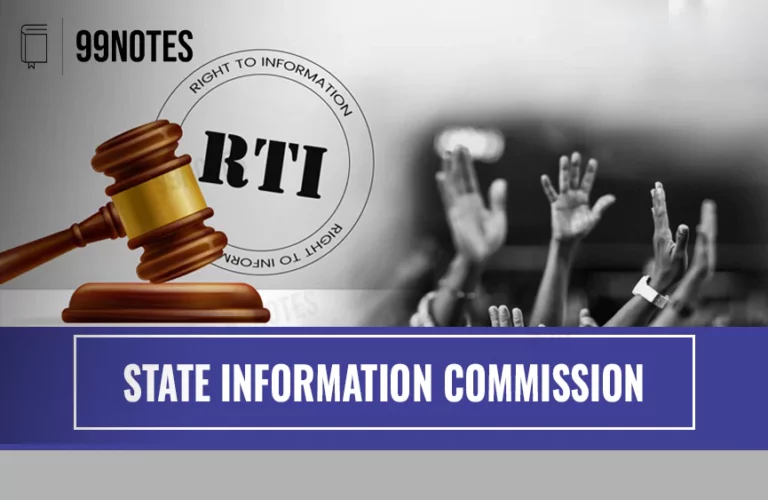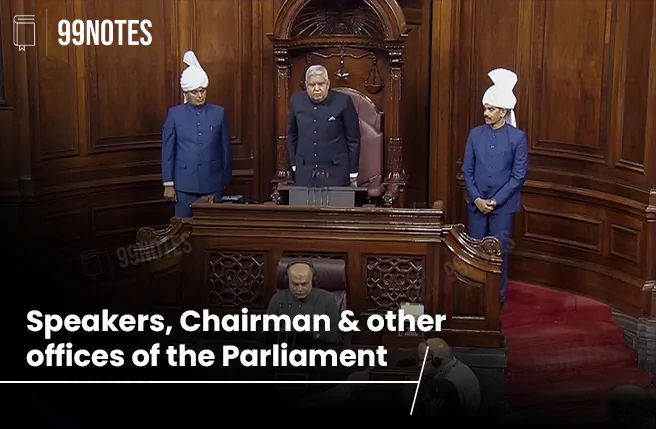Parliamentary System
In modern democracies, two kinds of relationships exist between the Legislature and the Executive; it can be defined by either the Parliamentary or the Presidential government system.
- The Parliamentary system involves a fusion of the Executive and Legislature, and the Executive is responsible to the Legislature for its acts and policies. It is also known as the Westminster Model (Location of the British Parliament), as it originated in Britain and is prevalent in countries like Britain, Canada, India, Japan.
- The Presidential system is based on a rigid separation of power, where the office of the President is independent of the Legislature in respect of the term of office. This can be seen in countries like the USA, Russia, Brazil, Mexico, Sri Lanka.
The Constitution of India provides for both the centre and the states to have parliamentary governance systems. The parliamentary system at the centre is covered in Articles 74 and 75, and the state systems are covered in Articles 163 and 164.
|
Separation of Power |
1. An organ of Government should not exercise the function of another organ. 2. An organ of the Government should not encroach upon the functions of the other two organs of Government. 3. The same person should not head more than one organ of the Government.
|
Features of the Parliamentary System of Government
The Parliamentary system has distinctive features which distinguish it from the presidential system. The feature of the Parliamentary system in India is discussed below:
- Two Executive Heads
-
- In the Parliamentary system, two executive heads exist; one is the head of state, and the other is the head of Government.
- The head of state, i.e. the President, is only the nominal and symbolic representative of the state. His functions are non-political and ceremonial in nature.
- The head of Government, i.e. the Prime Minister, is the real Executive and political head of the Government. He leads the cabinet and, therefore, the Government.
- Article 74 establishes a council of ministers led by the Prime Minister to aid and advise the President in exercising his functions; the advice is binding on the President (Refer to 42nd & 44th CAA). Thus, even though all power rests with the President, she is not free to act without the aid of the Council of Ministers.
- No rigid separation of power
-
- In the Parliamentary system, there is no clear-cut separation of power; in fact, there is a fusion between these organs of Government.
- The fusion exists primarily in four forms:
-
-
- The Executive, including the Prime Minister, is drawn from the Legislature and remains responsible to it. The members of executives, i.e. ministers, are accountable to the Legislature in matters of their respective departments.
- The Executive cannot pass its proposals without the support of the majority of the Legislature.
- The Legislature (only the Loksabha) can remove the Executive by passing the no-confidence motion.
- The Prime Minister can dissolve the Legislature before the completion of the term and can call for fresh elections.
-
- Collective Responsibility
-
- As per this principle, the Council of Ministers should collectively support all government decisions publicly and in the Legislature.
- Decisions made in the cabinet are considered as collective decisions and must be supported by all its members.
- A member of the council who cannot support government decisions in public and in the Legislature is expected to resign from the council of ministers.
- This feature becomes critical in the case of a coalition government.
- This principle ensures unity and promotes balance and moderation in the council. The critics argue that it is meant to enforce discipline in the party rather than achieving balance and moderation.
- Leadership of the Prime Minister
-
- In the Parliamentary system, the real power lies with the Prime Minister, who exercises a wide range of power, making him the most important player in the Parliamentary system.
- The Prime Minister(PM) is the leader of the Council of Ministers, the leader of the Parliament and the leader of the party he belongs to.
- Political homogeneity
-
- Generally, the Council of Ministers members belong to the same political party. In the case of a coalition government, the members operate within the ‘common minimum Programme’ framework, an Indian innovation in the Parliamentary system to build consensus.
Related FAQs of Parliamentary System
The key difference is that in the Parliamentary system, the Executive (Prime Minister & Council of Ministers) is directly responsible to the Legislature, while in the Presidential system, the President works independently of the Legislature.
India adopted the Parliamentary system due to its past experience under British rule, the need for a more responsible government, India’s social diversity, and the desire to maintain harmony between the Executive and Legislature.
The Parliamentary system promotes collective responsibility, ensures close cooperation between the Executive and Legislature, allows flexibility, provides for accountability, and prevents concentration of power in a single individual.
In the Parliamentary system, there is a fusion of power between the Executive and Legislature. In contrast, the Presidential system ensures a rigid separation of powers where both organs function independently.
Technically yes, but it would require a major Constitutional amendment altering the basic structure, which may not be permissible under the present constitutional framework. Moreover, the Swaran Singh Committee in 1975 recommended against it.







